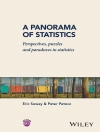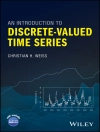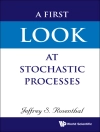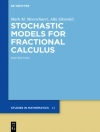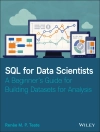The first OZCOTS conference in 1998 was inspired by papers contributed by Australians to the 5th International Conference on Teaching Statistics. In 2008, as part of the program of one of the first National Senior Teaching Fellowships, the 6th OZCOTS was held in conjunction with the Australian Statistical Conference, with Fellowship keynotes and contributed papers, optional refereeing and proceedings. This venture was so successful that the 7th and 8th OZCOTS were similarly run, conjoined with Australian Statistical Conferences in 2010 and 2012. Authors of papers from these OZCOTS conferences were invited to develop chapters for refereeing and inclusion in this volume. There are sections on keynote topics, undergraduate curriculum and learning, professional development, postgraduate learning, and papers from OZCOTS 2012. Because OZCOTS aim to unite statisticians and statistics educators, the approaches this volume takes are immediately relevant to all who have a vested interest in good teaching practices. Globally, statistics as a discipline, statistical pedagogy and statistics in academia and industry are all critically important to the modern information society. This volume addresses these roles within the wider society as well as questions that are specific to the discipline itself. Other chapters share research on learning and teaching statistics in interdisciplinary work and student preparation for futures in academia, government and industry.
Cuprins
Interacting with data, concepts and models: illustrations from the rpanel package for R.- An elephant never forgets – effective analogies for teaching statistical modelling.- Experience early, logic later.- Transforming statistics education in South Africa.- Beyond the statistical fringe.- The development of a first course in statistical literacy for undergraduates.- Spreadsheets and Simulation for teaching a range of statistical concepts.- Navigating in a new pedagogical landscape with an introductory course in applied statistics.- The Golden Arches: an approach to teaching statistics in a first year university service course.- How do students learn statistical packages? A qualitative study.- A comparison of first year statistics units’ content and contexts in a multinational study, with a case study for the validation of assist in Australia.- Understanding the quantitative skill base of business students for statistics.- Square PEGs in round holes: academics teaching statistics in industry.- Raising the capability of producers and users of official statistics.- Education for a workplace statistician.- Improving teachers’ professional statistical literacy.- Statistical training in the workplace.- Engaging research students in online statistics courses.- Engaging entry level researchers in agriculture in statistical communication and collaboration: why? and how?.- Researchers’ use of statistics in creative and qualitative disciplines.- Evaluation of the learning objects in a largely online postgraduate teaching program: the effects of learning style.- Problem-based learning of statistical sampling concepts using fantasy sports team data.- Biz Stats: a data and story library for business statistics.- Statistics training for multiple audiences.
Despre autor
Helen Mac Gillivray, Professor, Science and Engineering Faculty, Queensland University of Technology, Brisbane, Australia.
Michael Martin, Professor of Statistics, School of Finance and Applied Statistics, Australian National University, Canberra, Australia.
Brian Phillips, Associate Professor, Life and Social Sciences, Swinburne University of Technology, Victoria, Australia.







